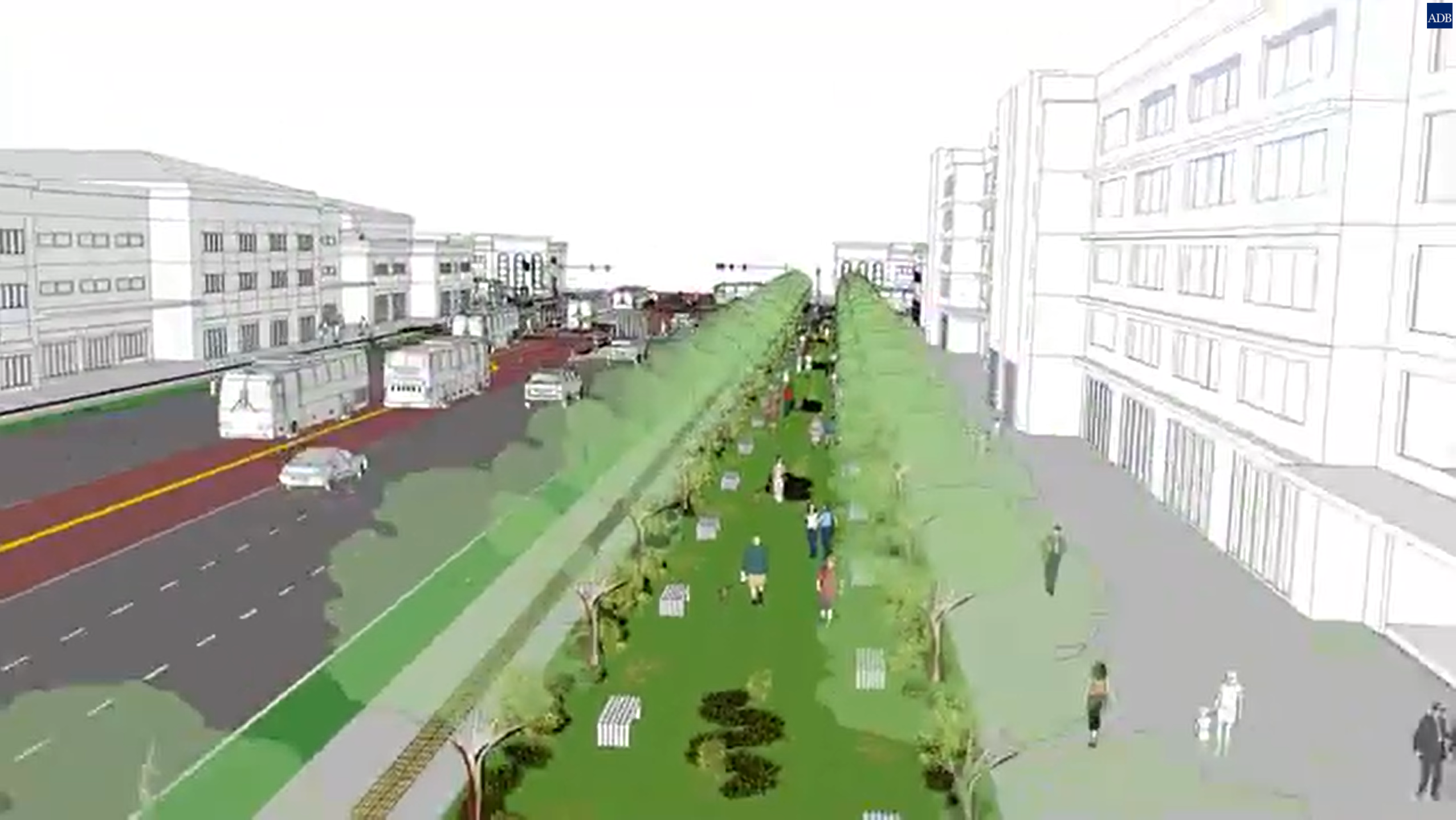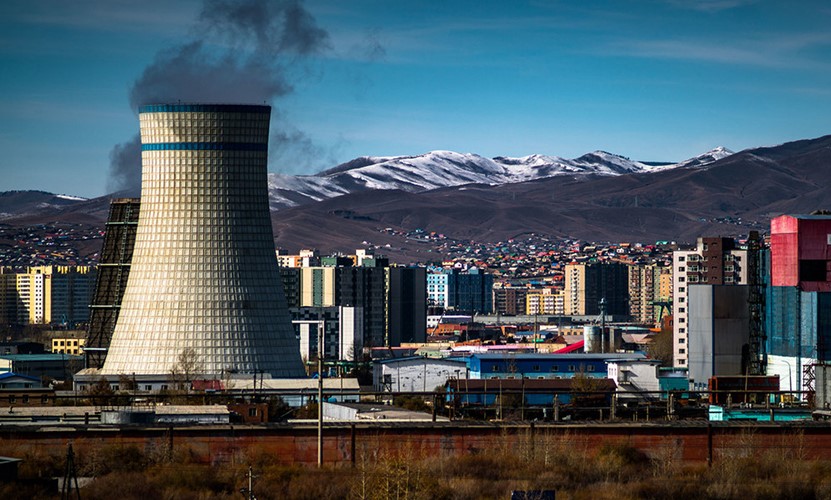
Jonathan Walters, an economist and senior advisor for the infrastructure consulting firm Castalia and Akiko Terada-Hagiwara, an ADB Principal Economist, answer questions on how to work through the issues towards decarbonization in Asia and the Pacific.
Countries around the world are working to produce energy with low levels of greenhouse gas emissions but they face formidable obstacles.
Decarbonization is the process of transitioning an economy to energy sources that produce low levels of greenhouse gas emissions, and reduce the impact of climate change.
It is important because, in addition to the well-being of the planet and its inhabitants, a country’s competitiveness often depends on making the transition to the use of low-carbon technology. This is because decarbonization is increasingly driven by economics, and not only by environmental concerns. Low-carbon technologies overall, with some exceptions such as nuclear fusion, wave power, and green hydrogen among others, have been getting cheaper relative to other technologies.
This has profound implications for a country’s economic strategy and policies, and the countries that adapt the best will likely outcompete the others in the global marketplace and create more jobs.
This stands in sharp contrast to an earlier period when economic competitiveness and mitigating climate change were often in opposition to each other, and trade-offs frequently had to be made between those two objectives. Nowadays, pursuing climate change mitigation and pursuing competitiveness often both lead in the same direction.
The transition to decarbonization is often slowed by institutional inertia, weak regulation, uncertainties in planning, risk-aversion, lack of up-to-date knowledge about the economics of different technologies, carbon-intensive technologies locked in by long-term contracts, and monopoly power providing protection from competitive market forces.
Decarbonization strategies need to factor in how technologies work together. While some of the technologies are disruptively cheap, others are not. For example, variable renewable energies such as wind and solar are now cheap, while energy storage technologies which can cover the whole period in which the wind is not blowing or the sun not shining are still on the way down their cost curves.
Electrochemical battery storage is now cheap enough for a few hours of storage, but not for the whole time that variable renewables are not generating electricity. For that, medium- to long-duration, storage technologies need to get cheaper. Examples of such technologies are green hydrogen, molten salts thermal storage, compressed air storage, pumped hydropower storage and other gravity-based storage.
Investment planning decisions therefore have to take into account the complexities and costs of the different technologies in use.
Countries can decarbonize more quickly by participating in international climate agreements, recognizing the differing responses of various sectors of the economy during the decarbonization process and by accessing low-cost financing.
International agreements about climate change, which require national commitments to decarbonization, can help. In some instances, it is the commitment to mutual international interest that can push forward the pursuit of national action in the face of what would otherwise be domestic obstacles.
Governments need to manage the politics of aligning national interest with international mutual interest, which can be complicated.
Countries’ decarbonization plans also need to reflect considerable difference between sectors of the economy. Just as technology costs decline at different speeds in the decarbonization process, the decarbonization potential also differs significantly across sectors. Energy decarbonization is now more advanced than transport decarbonization, for example, and transport more advanced than agriculture.
These also need to reflect the growing phenomenon of “sector coupling” when decarbonization progress in one sector depends on progress in another sector. For example, electric vehicles are more decarbonizing the more that the generation of electricity to fuel them is decarbonized. Similarly, growth in electricity demand from electric vehicles can create economies of scale in the generation of decarbonized electricity, thereby expanding that generation faster. Those two tendencies are obviously mutually reinforcing and appropriate policies can help to accelerate that process.
Countries need to have access to low-cost climate finance (such as the Green Climate Fund and Climate Investment Funds), and need well-coordinated strategies to maximize such financing for the highest priority uses. Such financing can be used to address the viability of those low-carbon technologies that are not yet the cheapest, or which face particular risks (sometimes as the first project in that technology in a given country), or face particular institutional obstacles.
Lower-cost “concessional” financing reduces the costs of decarbonizing technologies, and therefore can influence the choice between more- and less-carbon-intensive technologies in favor of the decarbonizing ones.
Technologies are described as “disruptive” when they change the landscape of the industry or sector where they exist. This can in part be related to when their cost passes below a price point (the “tipping point”), which makes them spread very fast. Solar photovoltaics and cellphones are great examples of these.
Tipping points are central to the decarbonization processes, as they occur increasingly in technologies in the energy and transport sectors, which are together responsible for a very large proportion of greenhouse gas emissions. Predicting when tipping points might be reached is important to making the long-term investment and planning decisions that most infrastructure needs, but such predictions are inherently difficult to make.
Having maximum knowledge and awareness of technological development and changing economics therefore becomes vital.
In general, the private sector, with international experience, is better at this than the public sector. For the simple reason that technology disruption happens sooner in some countries than in others, and the private sector is much more likely to have experience in a range of countries than the public sector is (with the exception of public sector companies with extensive international experience—a relatively rare phenomenon).
Overall, countries need multifaceted strategies for decarbonization, and above all need to see the economic opportunities in decarbonization, while mitigating the costs. They also need to be aware of the increasingly complex global environment in which decarbonization strategies are being formulated. Countries’ future development prospects are very much at stake.
This blog post is based on information shared at East Asia Forum 2022.
Author

Jonathan Walters
Senior Advisor, Castalia

Akiko Terada-Hagiwara
Principal Economist, East Asia Department, ADB
This blog is reproduced from Asian Development Blog.




















